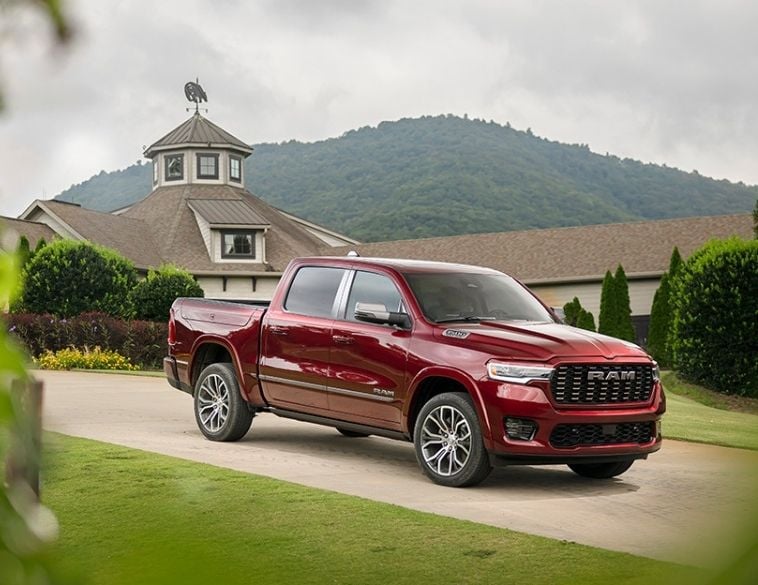Although industry experts are predicting softer used vehicle prices, it’s not all gloom and doom.
Used vehicles are an important part of the dealership portfolio and on your bottom line. Experts agree that softer used vehicle prices are coming, but just how long it’s going to take, and how much of an overall effect it will create, have yet to be seen.
A few factors are driving prices, but a major one is the number of vehicles coming off their leases in the U.S., says Brian Murphy, Vice- President of Research and Editorial at Canadian Black Book. “So much of what happens with price, in Canada or any other market, is supply and demand, and as soon as these variables move around, it affects price,” Murphy says. “There will be hundreds of thousands more cars coming off lease in the United States over the next year, and it’s increasing the supply and driving U.S. prices down.”
Murphy says his colleagues at Black Book in the United States are showing that while individual percentages depend on the vehicle segment, the industry average price has dropped about six percent from last year.
Headed south of the border
Prices are currently still strong in Canada because many of our used vehicles are exported to the United States. The popularity of trucks and SUVs is keeping their resale prices high, while our low dollar makes it very appealing for American outlets to come north to buy. “The Canadian dollar has been weak so far this year,” Murphy says. “It’s been up a little, but a dollar below 80 cents creates the opportunity to move vehicles across the border. It’s still sensible above 80 cents, but the opportunity is weakened. It’s the reverse of what we had many years ago when our dollar was at par, and there were so many U.S. vehicles coming here.”
Murphy says that Canadian Black Book expects prices to correct, “but a lot has to do with hinging on the Canadian dollar, and we’re looking at a 36-month horizon for these prices to adjust,” he says. “We don’t think they’ll adjust overnight, and it should be gradual.
“As well, Canadian car sales are at record levels and leasing penetration is strong. New car sales create more used cars, so we’ll also have more increased supply here. That’s not to say that there’s some great disaster coming, but that it’s just the normal ebb and flow of the market.”
Bright side, down side
Murphy sees at least somewhat of a bright side in lower prices, in that many Canadian dealers have been frustrated by not being able to buy enough trucks and SUVs, with Americans buying at Canadian auctions and paying close to what dealers here would have to charge retail buyers once the vehicles are on the lot. “The positive side is that Canadian dealers will have more vehicles available to them,” he says. “The down side would be for any Canadian dealers who export vehicles to the United States. That source of revenue could go away.”
Another business aspect that could be affected by lower used vehicle prices is the ability to take a customer out of a lease or loan and into a new vehicle. “The dealer approaches them only 18 months or so into their loan, and offers to pull them out and put them into a brand-new vehicle for the same or less, because the truck is commanding such a high value in the U.S. that they can export it and make the money,” he says. “That opportunity may be going away in the future.”
The X-Factor
There’s also another scenario that is still up in the air, but could potentially play a major role in vehicle prices if it does come to fruition: the Trump Administration’s proposal to renegotiate the North American Free Trade Agreement.
“Any restriction put on, that will affect the movement of used vehicles across the border, could have an immediate effect on vehicle prices here,” Murphy says. “We call it the ‘X-factor,’ because it’s the one big unknown. We hope it isn’t the case, because it’s not beneficial for anybody involved. If the U.S. government decides to put a tariff on all vehicles, we wouldn’t be able to export to the States, and we’d see vehicles piling up. We don’t know if (renegotiation) is a probable outcome, but if that does occur, we’d see a sharp correction, rather than the gentle one we expect to see over the next three years.”
Right now, the ability to ship used vehicles across the border is helping Canadian dealers, because arbitrage profits can still be considerable. Murphy cites an example he looked up of a late-model, well-optioned pickup truck with low kilometres. Between the wholesale and retail price, he determined that a U.S. dealer could expect to make “just a little shy” of $20,000 profit on it.
“That’s still going on, and that’s helping to keep Canadian prices strong,” he says.
But while Canadian dealers may be helpless when it comes to currency exchanges or any proposed government tariffs, customer service will be first and foremost when prices start to fall.
“You can’t pull them out of leases early, but high customer satisfaction can help to bring them back,” Murphy says.


